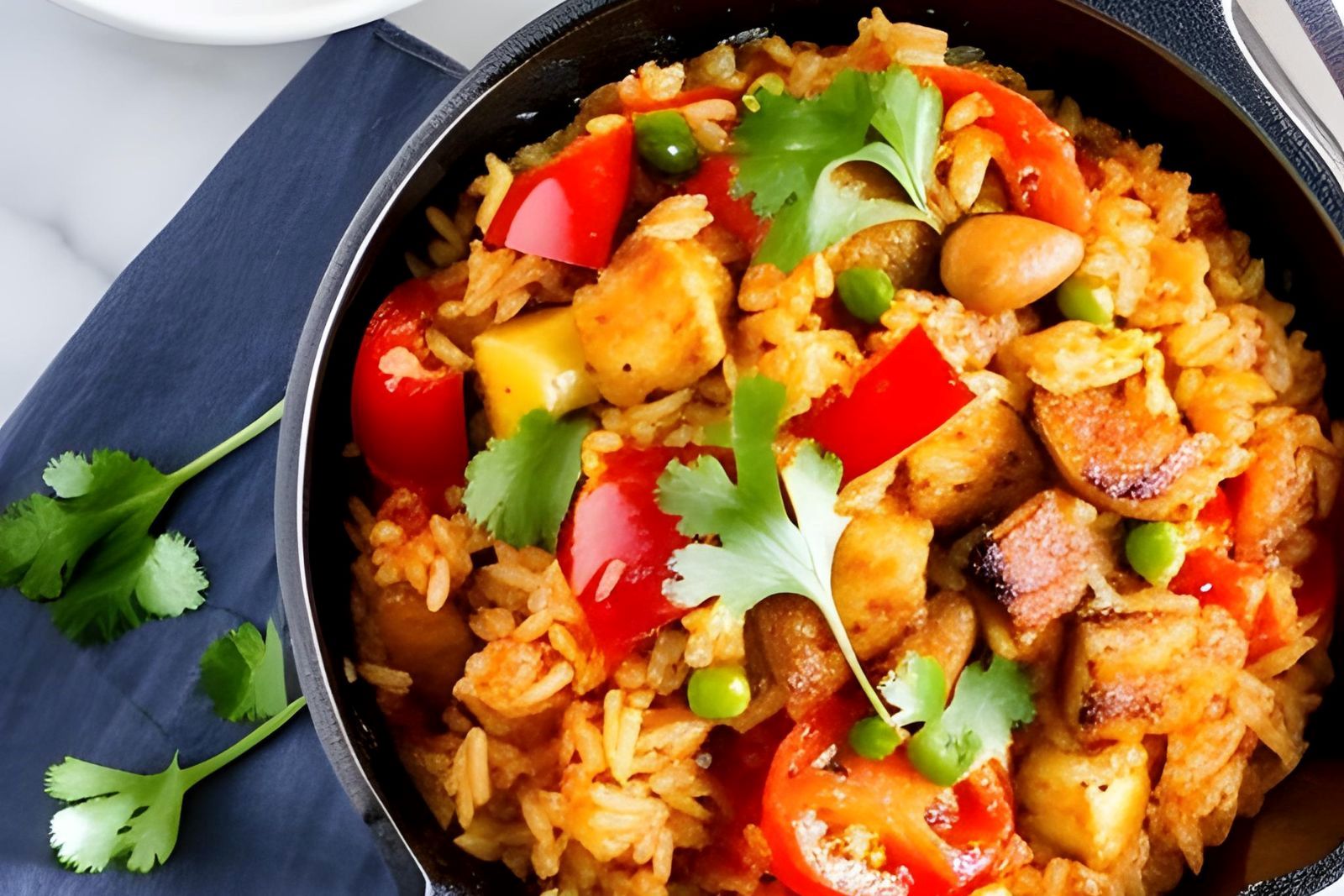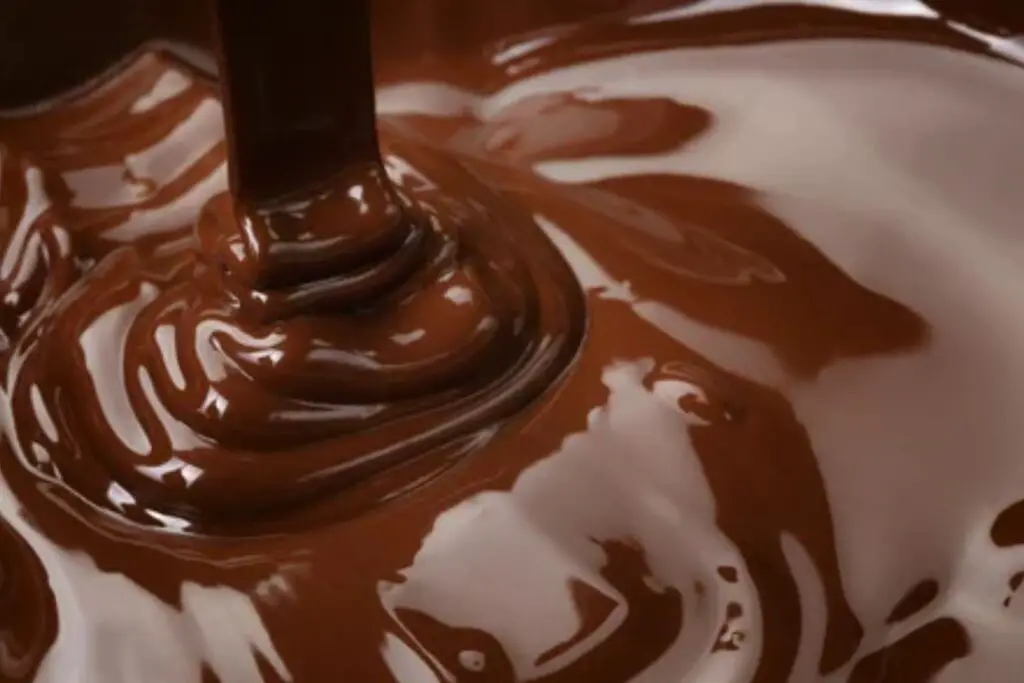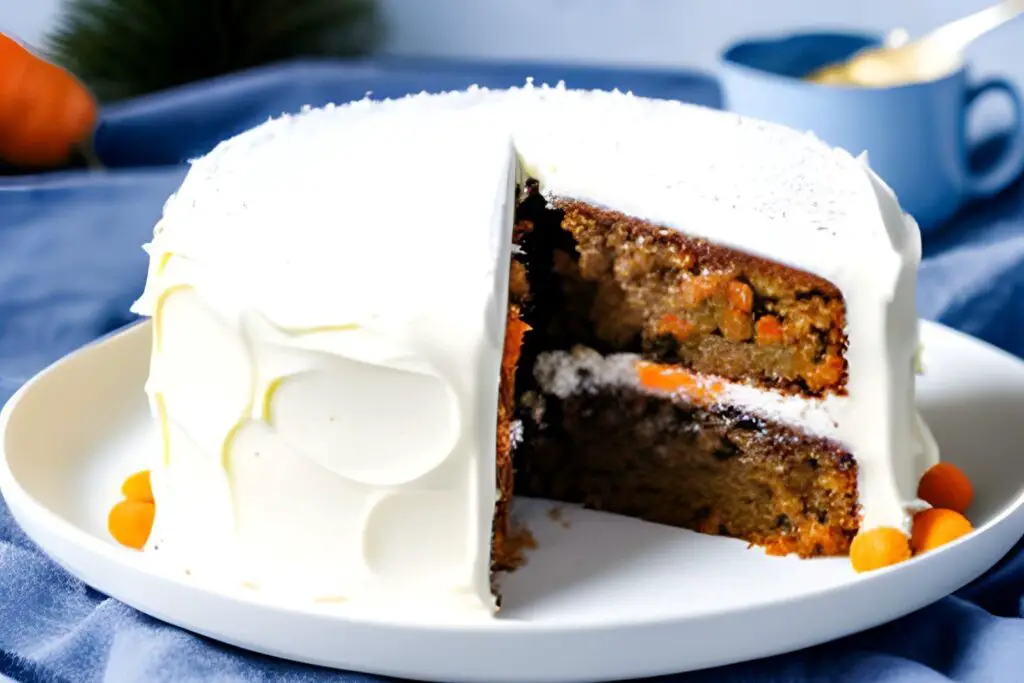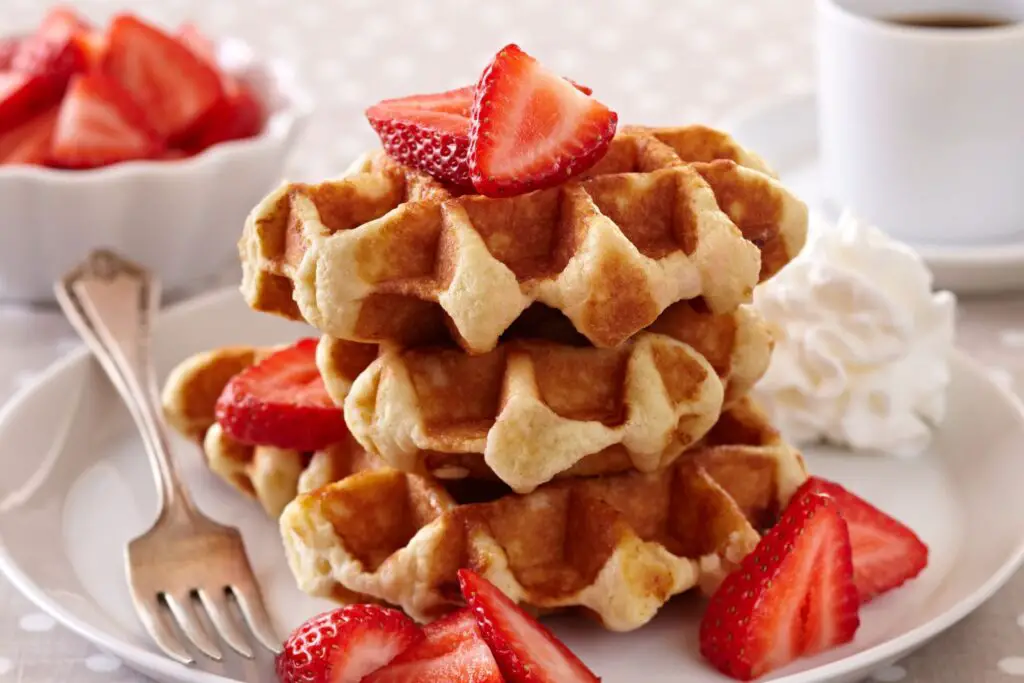
Jambalaya is a flavorful and hearty Louisiana dish that combines influences from Spanish, French, and African cuisines. This one-pot wonder is bursting with a harmonious blend of spices, rice, meats (such as sausage, chicken, and shrimp), and an assortment of vegetables. The rich and complex flavors of jambalaya make it a favorite among many food enthusiasts. However, preparing a large batch of jambalaya can often result in leftovers. Thankfully, jambalaya freezes exceptionally well, allowing you to preserve its vibrant flavors for future meals. In this guide, we will explore the best methods for freezing jambalaya to ensure it maintains its delicious taste and remains a convenient and satisfying option for any time cravings arise.
Here is a step-by-step guide on how to freeze jambalaya:
Step 1: Allow the jambalaya to cool down
Before freezing the jambalaya, it’s crucial to let it cool down completely. This step is essential to maintain the quality of the dish and prevent any negative effects that may occur during the freezing process.
When jambalaya is cooked, it generates steam due to the high heat involved in the cooking process. If you place hot or warm jambalaya directly into the freezer, the steam released will turn into condensation when it comes into contact with the colder air inside the freezer. This condensation can accumulate on the surface of the jambalaya and result in freezer burn.
Freezer burn occurs when the moisture on the surface of food freezes, then undergoes sublimation, which is the process of directly converting ice into water vapor without passing through the liquid phase. This sublimation can cause the food to become dehydrated and develop an unpleasant texture and taste.
To cool down the jambalaya, transfer it from the cooking pot or pan to a shallow container. A wide, shallow container will help the jambalaya cool more quickly and evenly compared to a deep container. Cover the container loosely with a lid or aluminum foil to protect it from any contaminants while it cools.
It’s important to note that leaving hot or warm jambalaya at room temperature for too long can promote the growth of bacteria, so make sure to cool it down within a safe time frame. Once the jambalaya has cooled down completely, you can proceed with the remaining steps to freeze it properly and enjoy the delicious flavors of this Louisiana dish at a later time.
Step 2: Portion the jambalaya
When it comes to freezing jambalaya, deciding whether to freeze the entire batch or portion it into individual servings is a key consideration. Portioning the jambalaya before freezing offers several benefits and can make your future meal preparations more convenient and efficient.
- Convenient thawing and reheating: Portioning the jambalaya allows you to thaw and reheat only the amount you need for a particular meal. This flexibility saves time and effort, especially if you don’t plan to consume the entire batch in one go. You can simply remove the desired portion from the freezer, leaving the rest undisturbed, and avoid the need to thaw and reheat more than necessary.
- Minimized waste: By portioning the jambalaya, you reduce the chances of wasting food. Sometimes, when freezing a large batch of jambalaya as a whole, you may end up thawing more than required, resulting in leftovers that may go uneaten. Portioning allows you to control the portions according to your needs, preventing unnecessary waste.
- Versatility in meal planning: Having individually portioned servings of jambalaya opens up opportunities for versatile meal planning. You can use the frozen portions as the main dish for a meal, pair them with other sides, or incorporate them into different recipes or dishes. This flexibility allows you to create a variety of meals using the frozen jambalaya, making your culinary experiences more exciting.
To portion the jambalaya, you can use a knife or a spoon to divide it into individual servings. Consider the serving size that suits your preferences or household’s needs. If you’re unsure about the portion size, a typical guideline is to divide the jambalaya into individual servings that are appropriate for one meal or one person.
After portioning, place each serving in a separate container or wrap it individually to maintain its integrity during freezing. This step ensures that the jambalaya portions remain separated and easy to handle when you want to thaw and reheat them.
Step 3: Wrap the jambalaya tightly
When freezing jambalaya, it is crucial to wrap each portion tightly to protect it from air exposure and prevent freezer burn. Proper wrapping helps maintain the quality, taste, and texture of the jambalaya during its time in the freezer.
- Preventing air exposure: Air exposure can lead to freezer burn, which can negatively impact the flavor and texture of the jambalaya. Freezer burn occurs when moisture from the food evaporates and forms ice crystals on the surface due to improper packaging. These ice crystals can cause dehydration and make the jambalaya dry, resulting in a loss of taste and quality. Wrapping the jambalaya tightly creates a barrier that reduces air contact and minimizes the risk of freezer burn.
- Sealing in flavors: Jambalaya is a dish renowned for its rich and complex flavors. By wrapping each portion tightly, you help seal in the flavors, preventing them from dissipating in the freezer. This ensures that when you thaw and reheat the jambalaya, it retains its original taste and aromatic profile, delivering a satisfying dining experience.
To wrap each portion of the jambalaya, start by using plastic wrap. Place the jambalaya portion in the center of a sheet of plastic wrap. Pull the corners of the plastic wrap over the portion, bringing them together to create a tight seal. Then, fold the sides of the plastic wrap towards the center, securing the jambalaya within a tight, sealed package. Make sure there are no gaps or openings in the wrap that could allow air to reach the jambalaya.
When wrapping jambalaya, it’s essential to press the plastic wrap directly against the surface of the food to minimize air contact. This method helps create a protective layer and maintains the freshness of the jambalaya.
Step 4: Wrap in aluminum foil
Once you have tightly wrapped each portion of the jambalaya in plastic wrap, the next step is to provide an additional layer of insulation and protection by wrapping it in aluminum foil. This extra layer of foil helps safeguard the jambalaya from freezer burn and maintains its quality during the freezing process.
- Protection against freezer burn: Freezer burn occurs when moisture in the food evaporates and forms ice crystals on its surface. These ice crystals can lead to dehydration and result in the deterioration of texture and taste. The aluminum foil acts as a barrier, shielding the jambalaya from excessive air exposure and preventing the formation of ice crystals. This protective layer helps maintain the moisture content of the jambalaya, ensuring it remains succulent and flavorful.
- Insulation: Aluminum foil provides insulation that helps regulate the temperature within the packaging. It helps to maintain a more consistent and even freezing environment, reducing the chances of temperature fluctuations that can affect the jambalaya’s quality. The foil also aids in preventing odors from other foods in the freezer from permeating into the jambalaya, ensuring its flavors remain intact.
To wrap the jambalaya in aluminum foil, place the plastic-wrapped portion in the center of a sheet of aluminum foil. Fold the sides of the foil over the jambalaya, creating a tight and secure package. Press the foil firmly to ensure there are no openings or gaps that could allow air to penetrate.
It’s important to note that tightly sealing the aluminum foil package is crucial to maintaining the quality of the jambalaya during freezing. This prevents air from entering and helps preserve the flavors and textures of the dish until you’re ready to thaw and enjoy it.
Step 5: Label and date the package
Labeling and dating each package of frozen jambalaya is a crucial step in freezer organization and food management. By clearly marking the contents and date of freezing on the foil, you can easily identify the jambalaya and ensure it is consumed within the recommended time frame, maintaining its quality and safety.
- Identification: Labeling the package allows you to quickly identify the frozen jambalaya amidst other items in the freezer. By clearly writing “Jambalaya” on the foil, you can distinguish it from other frozen foods and prevent confusion. This helps you locate and retrieve the desired package without the need for extensive searching, saving time and effort.
- Date tracking: Dating the package provides you with essential information about when the jambalaya was frozen. It serves as a reference point to ensure you consume the dish within the appropriate time frame. Different foods have varying recommended freezer storage times, and by dating the package, you can monitor the jambalaya’s freshness and ensure it is consumed before quality begins to deteriorate. This step helps you prioritize the consumption of the oldest packages first, reducing the chances of food waste.
To label and date the package, use a permanent marker to write “Jambalaya” or “Frozen Jambalaya” directly on the aluminum foil. Include the date of freezing as well. Be sure to write clearly and legibly to avoid any confusion later on.
You can also consider adding any other relevant details to the label, such as portion sizes or any specific variations or ingredients in the jambalaya. This information can be helpful when planning meals or accommodating dietary preferences.
Step 6: Store in the freezer
After properly wrapping and labeling each package of jambalaya, it’s time to store them in the freezer. The way you position the packages within the freezer can have an impact on maintaining the quality of the jambalaya during storage.
- Consistent temperature: Freezers can have temperature variations depending on their design and usage. To maintain the quality of the jambalaya, it’s ideal to store the packages in a part of the freezer where the temperature remains relatively consistent. The back or bottom shelf is often a suitable location as these areas are less prone to temperature fluctuations caused by opening and closing the freezer door. Consistency in temperature helps preserve the texture, flavors, and overall quality of the jambalaya.
- Avoiding exposure: Placing the jambalaya packages in an area of the freezer that minimizes exposure to air and light is also beneficial. Air exposure can contribute to freezer burn, while light exposure can degrade the quality of the food over time. By storing the packages away from the freezer door or areas where they may be subject to frequent disturbance, you reduce the risk of temperature fluctuations and unnecessary exposure to air and light.
- Efficient use of space: Proper freezer organization ensures efficient use of space and allows easy access to the jambalaya packages when needed. Arrange the packages in a way that maximizes the use of available space without overcrowding or crushing them. Consider stacking them neatly or placing them side by side, depending on the shape and size of the containers or wrapped portions.
Remember to leave some space around each package to allow for proper airflow within the freezer. Adequate airflow promotes consistent freezing and helps maintain the overall quality of the jambalaya.
As a final tip, it’s good practice to keep an inventory or note of the frozen jambalaya packages. This can help you keep track of what you have stored and plan your meals accordingly, ensuring efficient usage of your frozen jambalaya supply.
Other related questions
How do I thaw frozen jambalaya?
To thaw frozen jambalaya, there are a few safe and effective methods. The recommended method is to transfer the jambalaya from the freezer to the refrigerator and allow it to thaw overnight. This gradual thawing process helps maintain the quality of the dish. Alternatively, you can use the defrost setting on your microwave, following the manufacturer’s instructions. Once thawed, reheat the jambalaya on the stovetop or in the microwave until it reaches the desired serving temperature, ensuring it is heated evenly throughout. Enjoy your delicious thawed jambalaya!
How long can I freeze jambalaya?
Jambalaya can be stored in the freezer for up to three months without a significant decline in quality. During this period, the flavors and textures of the dish will be well preserved. It’s important to package the jambalaya properly in airtight containers or tightly wrapped in plastic wrap and aluminum foil to prevent freezer burn. Beyond three months, the jambalaya may still be safe to consume, but there may be a gradual decline in taste and texture. It’s recommended to label and date the packages and consume the frozen jambalaya within the recommended timeframe for the best culinary experience.
Can I refreeze the jambalaya after it has been previously thawed?
It is generally not recommended to refreeze the jambalaya after it has been previously thawed. When you thaw frozen jambalaya, moisture is released, and bacteria may start to multiply. Refreezing can further degrade the quality of the dish and increase the risk of foodborne illnesses. To avoid compromising safety and taste, it is best to thaw only the amount of jambalaya you plan to consume. If you have leftovers, store them in the refrigerator and consume them within a few days.
How do I know if my frozen jambalaya has gone bad?
To determine if your frozen jambalaya has gone bad, there are a few indicators to look for. First, check for any signs of freezer burn, such as discoloration, dryness, or ice crystals on the surface of the jambalaya. Additionally, if the jambalaya has an off or unpleasant odor, it may be an indication of spoilage. Changes in texture, such as mushiness or an overly dry consistency, can also suggest that the jambalaya has gone bad. Finally, trust your senses and if anything seems unusual or concerning, it’s best to err on the side of caution and discard the jambalaya to ensure food safety.
Can I use frozen jambalaya with the fresh ones?
Yes, you can use frozen jambalaya alongside fresh ones, although there may be some differences to consider. When combining frozen and fresh jambalaya, it’s important to ensure that the frozen portions are fully thawed and heated before mixing them. This will help maintain consistent flavors and textures throughout the dish. Additionally, be mindful of the overall cooking time, as the frozen jambalaya may require additional heating to reach the desired temperature. Finally, remember that freezing can affect the texture of certain ingredients, so there may be slight variations in the overall mouthfeel of the combined dish.
Can I freeze jambalaya which has been made with tomato-based sauce?
Yes, you can freeze jambalaya which has been made with a tomato-based sauce, but it’s important to be aware that the texture and flavor of the dish may change slightly after being frozen and reheated. The acidity in the tomato sauce can cause the texture of the dish to become slightly softer, and the flavors may intensify as it sits in the freezer. To minimize these changes, it’s recommended to slightly undercook the dish before freezing and to add a little bit of liquid, such as water or chicken broth, when reheating to help rehydrate the dish.
Can I freeze jambalaya which has been made with chicken, sausage, and shrimp?
Yes, you can freeze jambalaya which has been made with chicken, sausage, and shrimp. However, it’s important to handle each protein properly to prevent overcooking or becoming mushy. It’s recommended to slightly undercook the proteins before adding them to the jambalaya, and then freeze it immediately after cooking. When reheating, make sure to cook it thoroughly to ensure it’s safe to eat. Additionally, be aware that the texture of the shrimp may change after being frozen and reheated.
Can I freeze jambalaya in a glass dish?
Yes, you can freeze jambalaya in a glass dish, but it’s important to take some precautions. Ensure that the glass dish is freezer-safe and can withstand extreme temperature changes without breaking. To prevent cracking, allow the jambalaya to cool down completely before transferring it to the glass dish, and leave enough headspace to account for expansion during freezing. Additionally, consider covering the glass dish with a layer of plastic wrap or aluminum foil to provide extra protection against freezer burn.
Can I freeze jambalaya which contains vegetables?
Yes, you can freeze jambalaya which contains vegetables. However, it’s important to note that the texture of some vegetables may change slightly upon freezing and thawing. Vegetables with higher water content, such as zucchini or bell peppers, may become slightly softer after freezing. Consider blanching the vegetables before adding them to the jambalaya to help preserve their quality and texture during the freezing process.
Can I freeze jambalaya with seafood in it?
Yes, you can freeze jambalaya with seafood in it, but it’s important to handle it properly to prevent the seafood from becoming overcooked or mushy. It’s recommended to slightly undercook the seafood before adding it to the jambalaya, and then freeze it immediately after cooking. When reheating, make sure to cook it thoroughly to ensure it’s safe to eat.








